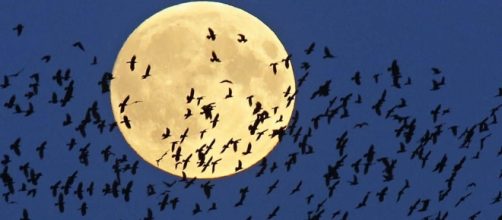It’s sometimes surprising to see just how many people are still interested in watching the sky at day or night, and how they tend to multiply (or at least become more pronounced) whenever there’s some big astronomical event going on. Now, the last total solar eclipse we had taken place March of last year, and the previous supermoon event (also the “largest”/closest such occurrence since 1948) happened November of the same, with a side order of Orionid meteor showers generated by Halley’s comet happening roughly the same period. As it turns out, this very friday night of February 10 will be a feast for the nightly sky-watcher and anybody interested in pretty evening sights.
If the sky is clear for you at that time, you’ll witness three astronomical occurrences happening simultaneously: a full moon, a lunar eclipse, and a comet at the same time.
‘Triple threat’ phenomena
It’s like stated, there will be three times the usual astronomic events for Friday evening, one happening because of the other, and the third just serendipitously tagging along. First up is the full moon of this month. Interesting to note, going by the titles used by Native Americans long ago and recorded in the Farmer’s Almanac, this particular full moon is known as the “Snow Moon,” for obvious reasons that remain true even today. After all, anybody will tell you that February could well be the snowiest month of the year when you live in the United States.
The National Weather Service can vouch for that.
Lunar eclipse
And because of the full snow moon, the second event is made possible, that of a lunar eclipse. You’ll recall that this type of eclipse happens at night (naturally) when the moon falls into the Earth’s “shadow” cast by it being between the moon and the sun. Since this is only a “penumbral” lunar eclipse, the moon is covered only slightly in shadow, causing the full moon to appear less bright than the usual; no “blood moon” phenomenon in other words.
Comet sighting
And finally, this moment will be the closest that passing Comet 45P will get to the Earth yet. Anyone with a telescope and knows where to look will have been tracking the comet ever since it became visible two months ago. Come Friday night when the eclipse is going on, 45P will be only 7.4 million miles away according to NASA calculations.
Time to spot them
If the blurbs above have gotten your interest, and as I said if the weather is cooperative where you are, then know that the moon is full for Friday night. The penumbral lunar eclipse starts 7:43 PM ET and can be seen entirely in Europe and Africa, at moonrise in the Americas, and at moonset in Asia. Comet 45P will be at optimum visibility overnight at 3 AM Saturday, February 11. Enjoy.

